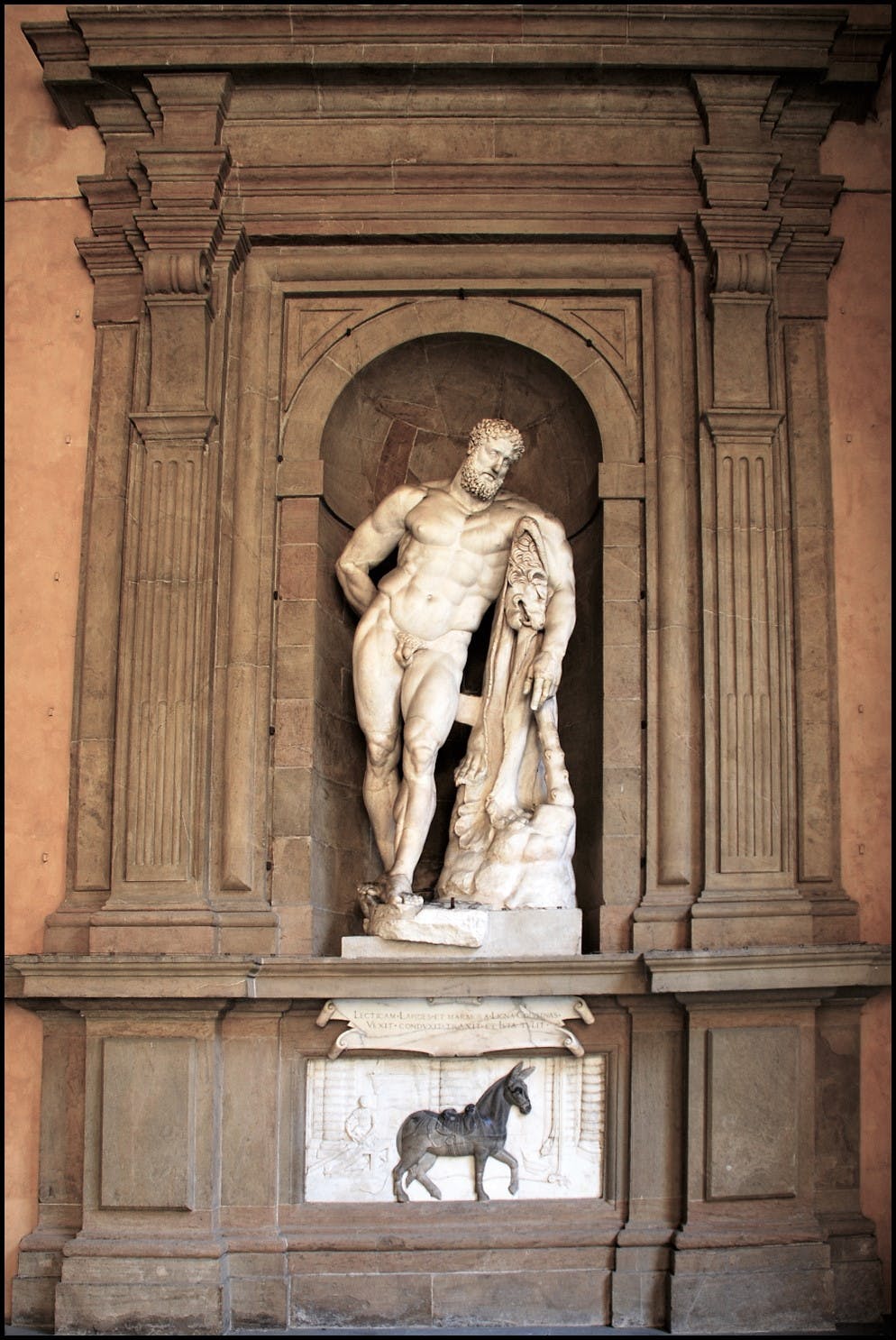Weary Hercules
Roman art
ΛΥΣΙΠΠΟΥ ΕΡΓΟΝ (“Work of Lysippos”)
Hercules is shown here resting on his club, while in his right hand, which is behind his back, he his holding the apples from the garden of the Hesperides, which were one of his famous “twelve labours”. The lion’s skin and the vigorously shaped body, together with the club are the attributes that identify the mythical hero with no doubt. The Florentine example is a copy of the statue known as the “Farnese Hercules” by sculptor Lysippos in the latter part of the 4th century BC and called this because it is the copy of the more famous statue - now in the National Archaeological Museum of Naples - once owned by the noble Farnese family. The inscription on the rock on which the club is resting, refers to the sculptor of the original prototype. The statue was brought to Florence in 1570, four years after its discovery among the ruins of an imperial palace on the Palatine Hill in Rome. It was purchased for a great deal of money by Grand Duke Cosimo and then given to sculptor Valerio Cioli to restore the missing parts, such as the nose, genitals and some parts of the hands. Cosimo I was particularly fond of the figure of Hercules, to the point of using it on his own seal and medals, identifying himself in the hero and imagining Hercules’ labours as a metaphor for his own feats - Hercules was already linked to Florence by a series of legends written between the 15th century and the first half of the 16th century, in which he figured as the mythical founder of the city. It was the intention of the Grand Duke for the large weary body of the hero at rest to become a symbol of the labours that men of power choose to undergo in the name of justice. Some details in the workmanship would suggest the work dates back to the second half of the 2nd century AD. In fact, the shape of the face and the way the hair is styled over the forehead are similar to the last official portrait of the emperor, Commodus (180-192 AD), who also tended to use the figure of Hercules for propagandistic purposes, to the extent that he had himself called the ”Roman Hercules”. It is possible, however, that this similarity to the types of portrait of Marco Aurelius’ son, rather than a re-elaboration from antiquity, is the result of the restoration work on the face during the modern age.
V. Saladino in G. Capecchi, D. Heikamp, A. Fara, V. Saladino, Palazzo Pitti. La reggia rivelata, Catalogo della mostra (Firenze, Palazzo Pitti, 7 dicembre 2003-31 maggio 2004), Firenze 2003, p. 480, n. 1
Farnese Hercules
Roman art
Portrait of a female mule
Bartolomeo Ammannati (Settignano 1511 – Florence 1592), workshop
